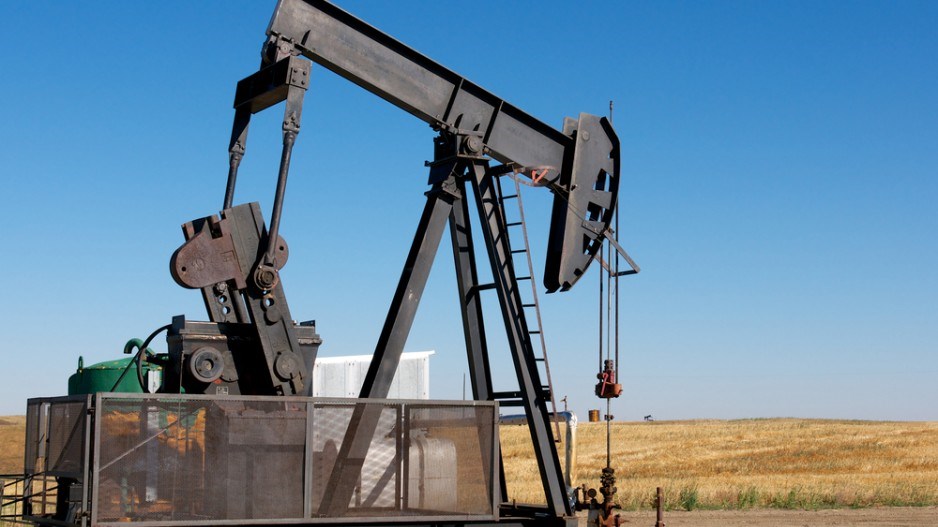CALGARY — Canadian oil and gas companies are expected to increase spending in 2023, but analysts say it will be another year of modest growth and not a return to boom times.
For Canada's energy industry, 2022 was the year that finally snapped a decade of weak commodity prices and brought prosperity back to the sector. With the lifting of global pandemic restrictions, the war in Ukraine, and the cumulative impact of years of under-investment in oil and gas, energy prices hit record highs in 2022 and Canadian companies reaped record profits.
But most of these profits went to paying down debt and rewarding shareholders, not into major construction or infrastructure projects. And even though commodity prices are expected to remain healthy in 2023, that theme is likely to remain.
"The oil producers have become far more financially disciplined over the last six or eight years," said Philip Petursson, chief investment strategist at IG Wealth Management, adding the threat of a looming recession in 2023 is one factor preventing oil and gas companies from getting carried away with spending plans.
"What we know is that in an economic downturn, oil demand falls," Petursson said. "So I think (companies) are going to want to be a little more measured and not say ‘hey, oil prices are just going to trend higher — let’s go all in in 2023.' ”
In Alberta alone, over the first 10 months of 2022, crude production averaged 3.7 million barrels per day — an all-time record thanks to surging global demand, according to ATB Financial.
Experts say production will be even higher in 2023, based on the already released capital budgets and production guidance of oil and gas companies. Many companies were able to pay down large amounts of debt in 2022, so will have more cash flow available next year as long as commodity prices hold around that US$75 per barrel mark.
In addition, the Trans Mountain pipeline expansion is expected to be complete by the end of the year, offering additional transportation capacity for oil companies and increasing the potential for export growth.
The Canadian Association of Petroleum Producers says it also expects investments in natural gas and liquefied natural gas to grow through 2023, as the LNG Canada export facility near Kitimat, B.C. continues to progress toward a 2025 completion date.
Petursson said he expects Canadian oil production in 2023 will exceed 2022's record — but only by a hair.
“I think it will nudge a little higher because of projects already in place," he said. “But I don’t think you’re going to see the 'drill, baby, drill' mentality of decades ago.”
Jonah Reznick, a senior research analyst with Wood Mackenzie, said the 2023 capital budgets unveiled thus far by Canadian oil and gas companies show "significant" increases in expected capital spending — in the range of five to six per cent on average — year-over-year.
But he said much of that is due to smaller projects, and can't be compared to the mega-projects and rapid industry expansion that took place during the boom years of pre-2014.
“If you take it net of inflation, I don’t think we’re seeing tremendous capital spend," Reznick said. "Producers aren’t responding with historical types of responses, even though we’re seeing robust commodity fundamentals.”
In 2023, the industry will likely continue to focus on shareholder returns and keeping their companies financially viable, Reznick said. He added that in addition to global economic uncertainty, Canada's oil and gas sector is facing increasingly aggressive greenhouse gas emissions reduction targets. The federal government is currently in the process of developing a legislated cap on emissions from the sector, something the industry opposes.
Mike Belenkie, CEO of Advantage Energy Ltd., — a mid-sized producer heavily weighted towards natural gas, with assets in the Montney region of Alberta — said his company is planning to grow at a rate of 10 to 12 per cent over the next several years.
“We’ve probably never been in a stronger position than we are today. Our debt’s very low, our production is growing, our team is steady and in very stable execution mode," Belenkie said.
But he added that he blames years of federal government policy — including a carbon pricing system that he says puts Canadian producers at a competitive disadvantage to their U.S. counterparts, and a regulatory and political environment that makes it difficult to build major projects — for constraining the overall industry and putting an end to the era of large projects.
"Over the last decade, most of the companies that were weak have died off and fallen away. And the companies that are left behind are fairly strong and have the ability to weather a lot of volatility," Belenkie said.
"But most of the industry has almost given up on the notion that we will ever be able to deliver more energy to the world," he said, adding he doesn't understand, for example, why the Canadian government isn't working to develop LNG capacity on the east coast to help address natural gas shortages in Europe and reduce reliance on coal.
"We now operate within a heavily constrained industry. And we've abandoned almost all illusions that those constraints will come off."
This report by The Canadian Press was first published Dec. 27, 2022.
Companies in this story: (TSX:AAV)
Amanda Stephenson, The Canadian Press




